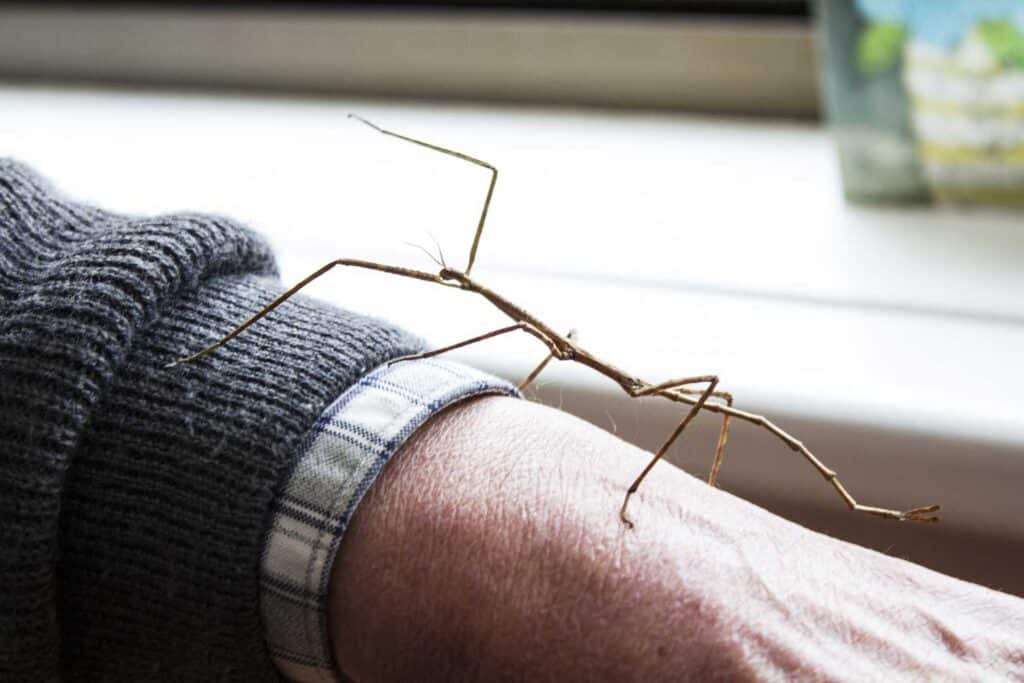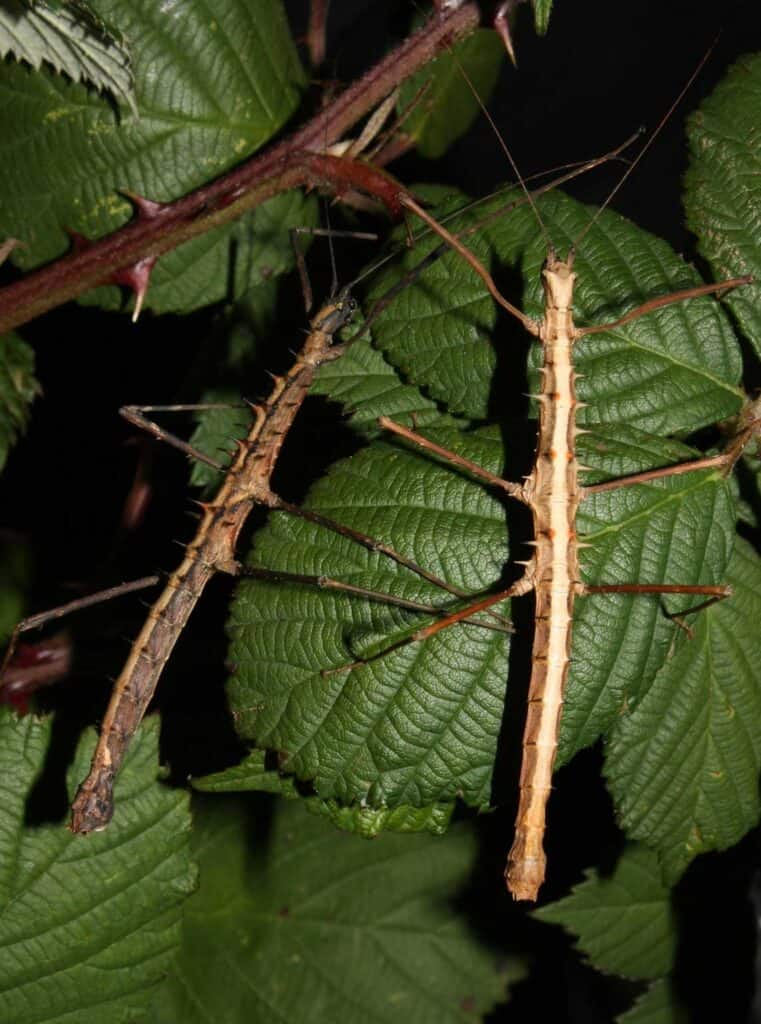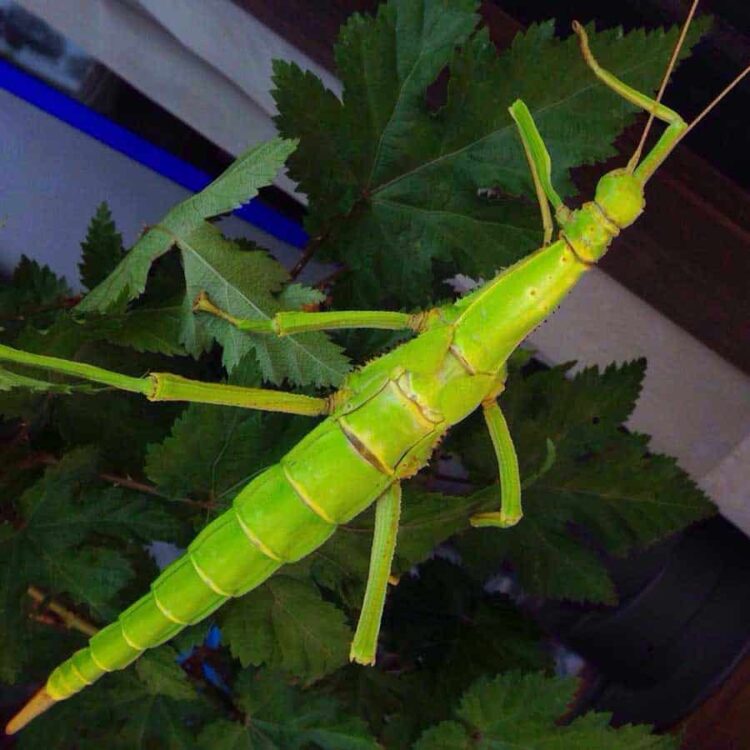Table of Contents
Are you going to buy a stick insect but are wondering where or how you are going to house it?
Know that this is the single most important decision you will make regarding your future pet. The wrong type of accommodation can drastically affect the quality of life of the insects. Furthermore, it could potentially lead to the spread of disease as well as make it impossible for your stick insects to shed their skin.
Nevertheless, you can make a stick insect enclosure at home with nothing more than a wooden frame and a few panes of glass. It’s not difficult for someone with a competent level of DIY skill to create a stick insect tank.
Nonetheless, there are a number of factors you need to consider before proceeding any further.
In this guide, we are going to explain how to set up a stick insect tank.
For more advice and information on keeping and looking after stick insects, check out my ebook on Amazon click here
(opens in a new tab).

How Big Should the Stick Insect Tank Be?
Your first consideration is the size of the tank. This is more important than you might initially think as it is not just about how much space your pets have to move around.
Stick insects also need a certain amount of height so that they can shed their skin properly. Every stick insect species will need a different amount of space, depending on how large they are as a species.
For example, the Indian stick insect requires an estimated 18 inches of height to shed its skin comfortably. But even then, it is always better to allow for at least an extra couple of inches or so to be on the safe side.
But why is the moulting process so critical to a stick insect? Let’s take a closer look at this phenomenon.
The skin-shedding process is key to the growth cycle of any stick insect. When they moult, they shed their whole outer layer of skin . This marks a new phase in the growing process, meaning that the stick insect will be slightly larger after each moult; the process continues until they reach adulthood
. This marks a new phase in the growing process, meaning that the stick insect will be slightly larger after each moult; the process continues until they reach adulthood .
.
However, not a lot of people know that stick insects are actually subadults for most of their lives. After the final shedding stage, they only survive as adults for between three and six months. Typically, a stick insect will have gone through between six and nine shedding stages prior to reaching full adulthood.Now that you know a little bit more about the shedding process, also know that if a stick insect is unable to shed its skin, it could end up dying.
Tying this in to the height of the enclosure then, the reason it is so important is because stick insects will climb to the top and suspend themselves upside down from whatever object they find at the necessary height. It can be hard for the amateur stick insect owner to understand just how much space is required to complete the shedding process successfully. Just know that it is a highly delicate process.
So the actual size of the enclosure will depend on the needs and size of the particular stick insect species in question.
For example, a Timema Cristinae  from North America
from North America only grows to a half-inch long at full adulthood. It makes sense then that this species will not need the 18 inches an Indian stick insect requires to shed comfortably each time.
only grows to a half-inch long at full adulthood. It makes sense then that this species will not need the 18 inches an Indian stick insect requires to shed comfortably each time.
So this is where good research comes in handy.

Are You Encouraging Disease?
Now that we have discussed size, we need to look at hygiene.
Did you know that the single greatest threat to any stick insect colony is disease? Fungal infections are quite common though due to the natural conditions most stick insects prefer. They eat leaves not taken directly from the branch and prefer humid environments. All these conditions could come together to create a breeding ground for disease.
So yes – the spread of disease is largely influenced by how well the enclosure is (regularly) cleaned. Even so, overcrowded conditions can also lead to the spread of fungal infections.
In light of this, do not be afraid to split up your colonies and set up another stick insect tank if you believe disease is spreading or is liable to spread in the near future.
Unfortunately, this is largely a matter of trial and error, especially for the novice stick insect owner. By conversing with other stick insect owners though (think online forums, Q & A sites, etc.), you can get an idea of how many insects you can keep in a single tank of a specific size.
in a single tank of a specific size.
Do You Have the Right Temperatures?
Regulating the temperature is one of the most important tasks in setting up a stick insect tank.
Different species prefer different temperatures and humidity levels. The Phobaeticus Kirbyi from Borneo, for example, comes from a tropical land and so requires higher humidity levels than many stick insects native to cooler climes. Although some stick insect species can adapt, most never adapt perfectly.
Another reason the right temperature is needed for your stick insect is to help it shed its skin. If it’s too cold or not humid enough, the skin may become too hard, thus making it difficult to shed and meaning that the stick insect could damage itself in the process.
Again, it’s all about research. Make sure you learn what your species requires.
It’s also important to mention that when the temperature is too high it changes insect development . Warmer than normal temperatures will cause your stick insect to age faster.
. Warmer than normal temperatures will cause your stick insect to age faster.
So how do you make sure your stick insect tank is the right temperature?
Heat mats and heat bulbs are your best friends. Also, if you have a glass tank, refrain from leaving it in direct sunlight, especially during the warmer, summer months.
You should have as much control as possible over the conditions.

What Do You Need to Build a Stick Insect Cage?
We briefly spoke about the need for heat mats and heat bulbs to regulate the temperature of your stick insect tank. Now we’re going to give you a list of the materials you need to start putting your cage together.
Wood –The perfect frame for your cage is wood. Metal can be used, but metal will make the cage extremely heavy and difficult to move around. Furthermore, it’s more expensive and more complicated to work with metal. We recommend a strong hard wood for building your cage.
Plexiglass – Plexiglass is a good option if you want a material that lasts a lifetime and will not shatter. It is ideal for exotic insects that need a high level of humidity. The only downside of plexiglass is that it is relatively expensive.
Glass – Conventional glass is the favoured option for most stick insect owners. It is cheap, and it obviously allows for perfect visibility. In addition, it is quite easy to work with and it offers stick insects the warmer conditions they might need. Be aware, though, that they will not be able to climb up the glass.
Insect Netting – Netting is something you may not have considered. Fit it onto the walls of your tank and your insects now have more places to climb. It should be considered essential in a glass enclosure for promoting good shedding.
These are the basic materials to start creating an enclosure. Now you need to start putting it together.
How to Set Up a Stick Insect from Scratch at Home?
There are a lot of different types of cages you can make, but the principle is always the same. It will be a cuboid shape and all you have to do is get the dimensions right.
It shouldn’t take you more than an afternoon to build. There are plenty of resources online for this, such as this one at Craftsman Space .
.
The real challenge is in getting the conditions just right. Conditions that are too warm or too cool will affect the lifespan and quality of life of your stick insects.
At the end of the day, you can buy a ready-made stick insect cage if all the above seems to be a little hard.
This would give you the advantage of being able to talk to an expert for advice and information. You will also get help on the right type of cage for your particular stick insect species.
If you haven’t owned a stick insect before, we recommend buying a cage and speaking to a professional first. He or she will be able to educate you on a few aspects, including the right type of cage, how often you should clean the cage, and how many stick insects you can comfortably house together, etc.
Last Word – Are You Ready to Get Started?
With all of this knowledge, you should have everything you need to start making a tank for your new stick insects.
The number one piece of advice is to find out everything you can about your species. Find out what they need to thrive, including the conditions, how much space they need, and how well they can function with other species in close proximity.

